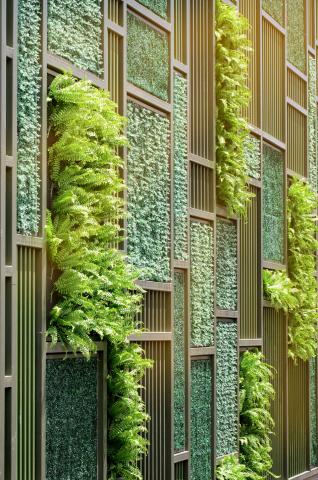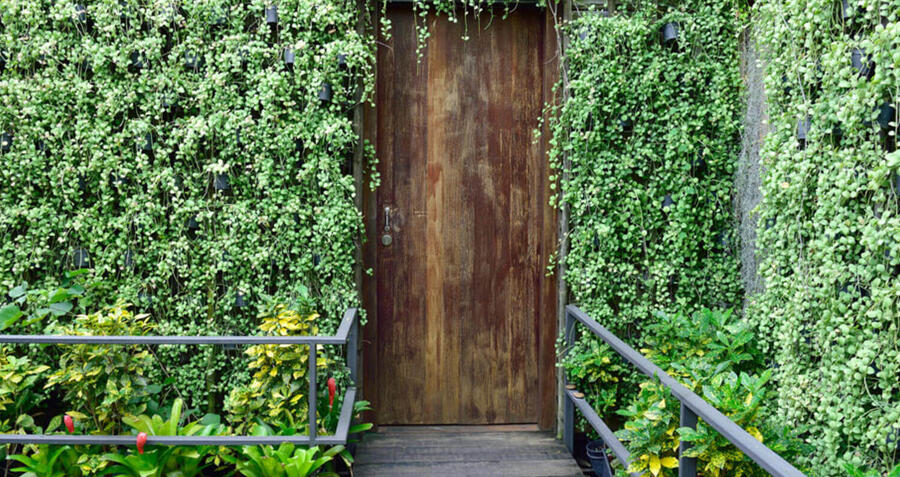Vertical gardens are more than just a trendy design feature; they also help reduce heat in your home, bringing down cooling costs and saving emissions in the process.
Not sure where to start? We spoke to Melbourne landscape design expert, Andrew Whyte, on how and why to build your own.
What advice can you offer about setting up a vertical garden?
Vertical walls come in many shapes and sizes, from simple bags such as ‘Wally by Woolly Pocket' to complete systems such as 'Vicinity Green Wall’. When choosing the one that is right for you, consider the ease of installation and ongoing maintenance. Some are designed for DIY, whereas other systems may require a professional to install them. One of the big things to think about is the ease of watering, but you’ll also need to consider the growth of the plants and where their roots will be allowed to grow.
What are some of the benefits of a vertical garden?
Keeps you cool. With strategic placement of vertical gardens, indoor plants can break vertical airflow, which slows and cools down the air. Green walls can also help lower the air temperature around intake valves, which means air conditioning units will require less energy to cool the air before being circulated around a home.
Improve air quality. Vertical gardens also help improve air quality and reduce noise pollution within the home. Air that has been circulated throughout a house with a strategically placed green wall will be cleaner than that on an uncovered building. The indoor plants help to remove nasty airborne pollutants. Urban greenery can block out high frequency noises, making vertical gardens a great option for inner-city dwellings.
Flow on benefits. Houses with vertical gardens possess a competitive edge in the marketplace. Installing a garden like this is an easy way to increase the value of your property. Homes with vertical gardens have been documented as having a greater positive impact on human health than those without. They also look fantastic!

How and why can vertical gardens save money on utilities?
Vertical gardens add an extra layer of insulation to your home, cooling down the interior temperature. The decrease in air temperature could result in savings on your energy bills. Indoor plants may help slow down airflow and cool down the air, which also helps in bringing down energy costs.
Do you find city dwellers opt for living walls as a design feature or for their practical benefits?
We find the practical benefits are the strongest motivation for people deciding to install green walls; they really can’t be overlooked. The drop in energy costs (particularly over summer) is very appealing for people living in inner-city areas. The design element is also definitely a big factor in people’s decision to install verticals gardens.
What tips and tricks can you offer our readers on designing, building a vertical garden?
Keep your design simple and engage a professional who is familiar with vertical gardens. It’s really handy for the vertical gardens to be in close proximity to a solid water supply and drainage, though these aren’t necessarily essential.
Go with a system that is not too complicated and looks great from day one. Try to position near natural light otherwise you will need to rotate the plants or install grow lights. They need to stay alive after all!
Just like any other garden, ensure you water it regularly. We recommend installing an automatic watering system. Your landscape designer can help with that.
From hanging gardens to passive design, there are many ways you can save on your energy bills. You’ll also save by making sure you’re getting the best deal on your energy plan.
These are the views of Andrew Whyte, not EnergyAustralia. For more information or to get in touch, visit Andrew at Whyte Landscape Design.




